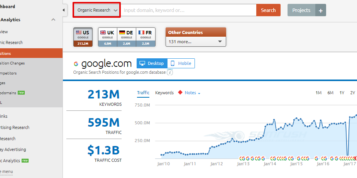Search Engine Optimisation, or SEO, has the power to make or break a business. Good SEO can propel a website to the top of Google’s search listings but many businesses fail to harness its potential or grasp its importance, a picture not helped by the fact that SEO is such an unpredictable science, constantly changing and putting the patience of website owners to the test. The optimisation techniques that worked perfectly until yesterday can be considered history today after yet another algorithm update from Google.
As far as SEO was concerned, 2012 was the year of quality, not quantity. Google made some radical changes to its algorithms, most significantly Panda, first released in 2011, and Penguin, launched in April 2012, both of which target low-quality websites. In its efforts to remove ‘spammy’ pages and websites, Google penalised websites that were, amongst other things, stuffing keywords, writing purely for SEO purposes, and engaging in cloaking practices (such as embedding white text on white backgrounds).
Not long after the Penguin updates, Google hit with yet another update. The ‘Pirate update’ was rolled out back in August 2012 with the purpose of penalising sites that have been repeatedly accused of copyright infringement. So, if Google receives a large number of ‘takedown’ requests against your site and after analysing it comes to the conclusion that your site violates copyright, then your site gets penalised. How? Google will cause your site to rank lower in search results, or even de-listed.
But Google isn’t all about punishment, and there were a few releases last year designed to help webmasters achieve their ranking goals. Google’s Disavow Tool has been designed to help site owners with their efforts to follow the Google Guidelines as closely as possible, allowing owners to get rid of all unwanted backlinks that might attract a penalty from Google. Last year also saw Social Media start to play a more important role in the ranking process, offering opportunities for the Twitter-savvy, and an update to Google’s algorithm meant to improve local search results.
Looking to the year ahead, Google is expected to continue in its spam crusade, with further updates to Penguin expected. Link building, the method of mutually linking two sites together to ensure traffic, as we know it will disappear. The popular link building schemes we knew and love will not be enough: Google’s algorithm changes keep making link building more and more difficult with every update. Structured data will play an even bigger role – providing additional information about a page’s content directly into search engine results pages will not only differentiate your website from others, it might also be perceived as a website performance indicator.
Cloak-and-dagger approaches to SEO are out, but website owners have a raft of tools available to improve their rankings, starting with marking their sites as user-friendly as possible and actively engaging with the customer base:
Content
- Page content should be written for the user and not be stuffed with keywords for SEO purposes alone. Write about what people actually care about and use words and phrases people use. Target only relevant keywords, rather than the most popular general keyword in an attempt to get more traffic. This extends to titles and headings, which shouldn’t be used to add irrelevant key words.
- Quality content is key. Search engines love quality content, so offer as much relevant information as possible. Moreover, keeping content fresh and updated regularly will not only improve rankings, but be good for readers.
Social media
- Use social media as a means of communication and of improving SEO – engage with your followers, answer their questions and keep them updated.
Search
- Optimise the way search engines can crawl your website. It doesn’t help having great content if no search engine can index it. Make sure you have a sitemap on your site.
- Get natural backlinks – create interesting content that’s worthy of sharing, be it posts, infographics, videos or images. Don’t stick with one keyword, make sure the anchor text is informative so visitors know what they’re clicking on.
- Use structured data on your pages, to show your reviews score for instance. Also use the authorship mark-up (rel=”author”) to offer more information about your posts and their authors.
- If you target a certain area, use local searches to help visitors find you more quickly.
Mobile
- Embrace the mobile web – it’s a fact that more and more people use their mobile devices to find the products or services they need. Make sure your website renders well on the most famous devices. Consider “responsive design” as it’s preferred by major search engines, especially by Google.
- Mobile internet usage keeps growing so it’s imperative that mobile SEO best practices are being implemented.
Google’s recent efforts to prioritise high quality and unique content over more traditional search engine optimisation techniques means that websites must get creative when it comes to SEO. The good news is that Google is actually trying to help by providing accurate descriptions for websites that are good but run by people who don’t have the know-how to fiddle with meta data, and while it seems doubtful Google will want to kill off metadata completely, a well-written, targeted description should really have the edge over a description picked out by an algorithm.




